TABLE 14-16
What are the factors that determine the acceleration time (in sec.) from 0 to 60 miles per hour of a car? Data on the following variables for 171 different vehicle models were collected:
Accel Time: Acceleration time in sec.
Cargo Vol: Cargo volume in cu. ft.
HP: Horsepower
MPG: Miles per gallon
SUV: 1 if the vehicle model is an SUV with Coupe as the base when SUV and Sedan are both 0
Sedan: 1 if the vehicle model is a sedan with Coupe as the base when SUV and Sedan are both 0
The regression results using acceleration time as the dependent variable and the remaining variables as the independent variables are presented below.
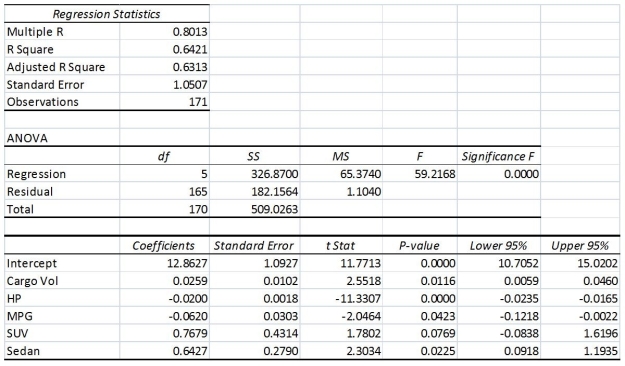
The various residual plots are as shown below.
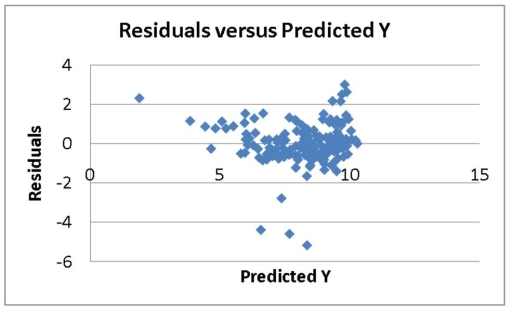
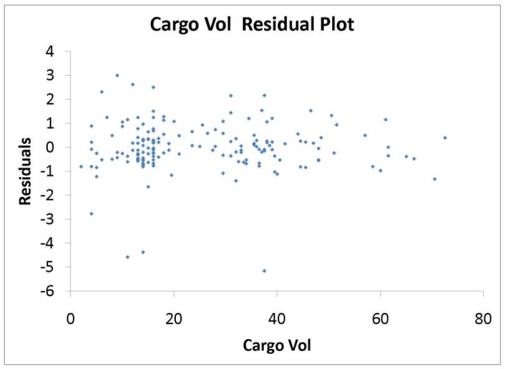
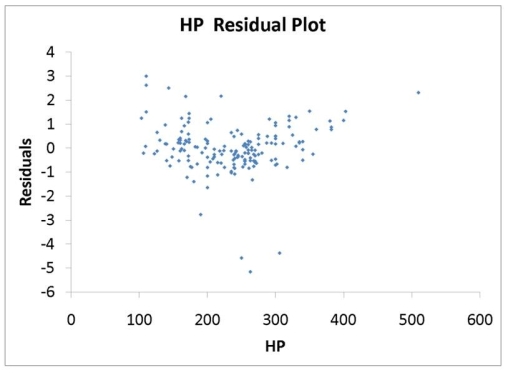
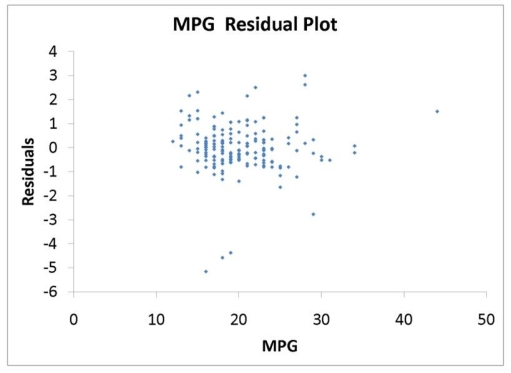
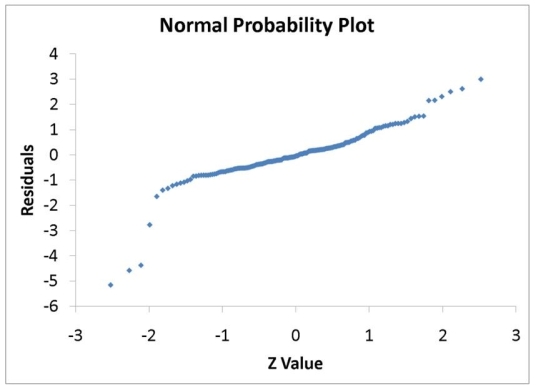

-Referring to 14-16, what is the correct interpretation for the estimated coefficient for MPG?
Definitions:
Central Route Change
A persuasive approach that focuses on logical arguments and content, leading to long-lasting attitude change by engaging systematic thinking.
Reactance
A stimulating response to proposals, individuals, regulations, or norms that challenge or remove certain freedoms of behavior.
Cognitive Dissonance
The psychological discomfort experienced by an individual who holds two or more contradictory beliefs, ideas, or values at the same time.
Social Comparison
The process by which individuals evaluate their own abilities, achievements, and emotional states in relation to others.
Q7: Referring to Table 14-15, the null hypothesis
Q15: Referring to Table 14-19, what is the
Q50: Referring to Table 16-13, the best model
Q59: Referring to Table 14-15, the null hypothesis
Q73: If the correlation coefficient (r) = 1.00,
Q87: Referring to Table 16-3, if this series
Q109: Referring to Table 13-3, the error or
Q109: The procedure for the Wilcoxon rank sum
Q119: MAD is the summation of the residuals
Q172: Referring to Table 13-11, predict the revenue